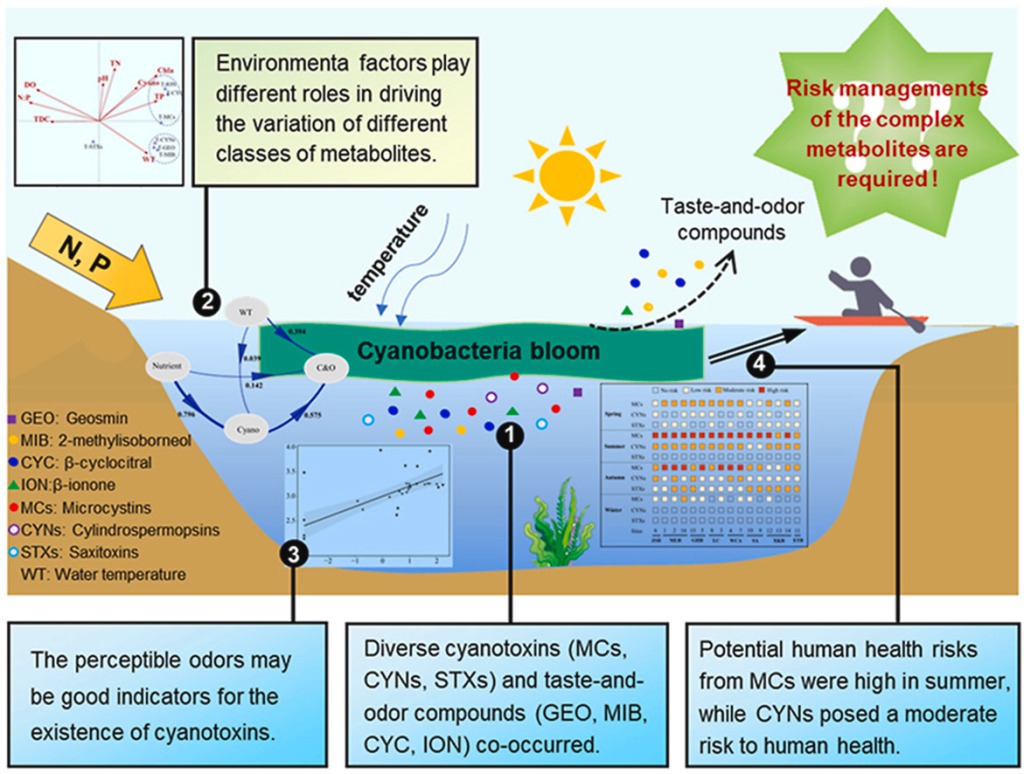
Authors
Hongmin Li, Xiaohong Gu, Huihui Chen, Zhigang Mao, Ruijie Shen, Qingfei Zeng, You Ge
Cyanobacterial blooms producing toxic metabolites occur frequently in freshwater, yet the environmental behaviors of complex cyanobacterial metabolites remain largely unknown. In this study, the seasonal and spatial variations of several classes of cyanotoxins (microcystins, cylindrospermopsins, saxitoxins) and taste-and-odor (T&O) compounds (β-cyclocitral, β-ionone, geosmin, 2-methylisoborneol) in Lake Taihu were simultaneously investigated for the first time. The total cyanotoxins were dominated by microcystins with concentrations highest in November (mean 2209 ng/L) and lowest in February (mean 48.7 ng/L). Cylindrospermopsins were abundant in May with the highest content of 622.8 ng/L. Saxitoxins only occurred in May (mean 19.2 ng/L) and November (mean 198.5 ng/L). Extracellular T&O compounds were most concentrated in August, the highest being extracellular β-cyclocitral (mean 240.6 ng/L) followed by 2-methylisoborneol (mean 146.6 ng/L). Environment variables play conflicting roles in modulating the dynamics of different groups of cyanotoxins and T&O compounds. Total phosphorus (TP), total nitrogen (TN), chlorophyll-a and cyanobacteria density were important factors affecting the variation of total microcystins, β-cyclocitral and β-ionone concentrations. In contrast, total cylindrospermopsins, 2-methylisoborneol and geosmin concentrations were significantly influenced by water temperature and TP. There was a significant and linear relationship between microcystins and β-cyclocitral/β-ionone, while cylindrospermopsins were positively correlated with 2-methylisoborneol and geosmin. The perceptible odors may be good indicators for the existence of cyanotoxins. Hazard quotients revealed that potential human health risks from microcystins were high in August and November. Meanwhile, the risks from cylindrospermopsins were at moderate levels. Cylindrospermopsins and saxitoxins were first identified in this lake, suggesting that diverse cyanotoxins might co-occur more commonly than previously thought. Hence, the risks from other cyanotoxins beyond microcystins shouldn’t be ignored. This study also highlights that the necessity for further assessing the combination effects of these complex metabolites.

Here in Michigan , especially near Detroit, with combined sewage overflows, stormwater runoff from farms, etc. it’s an issue for the FreshWater Great Lakes. Many of us get drinking water from Lake Huron which is piped down to Macomb and Oakland Counties in SouthEast Michigan.
LikeLike